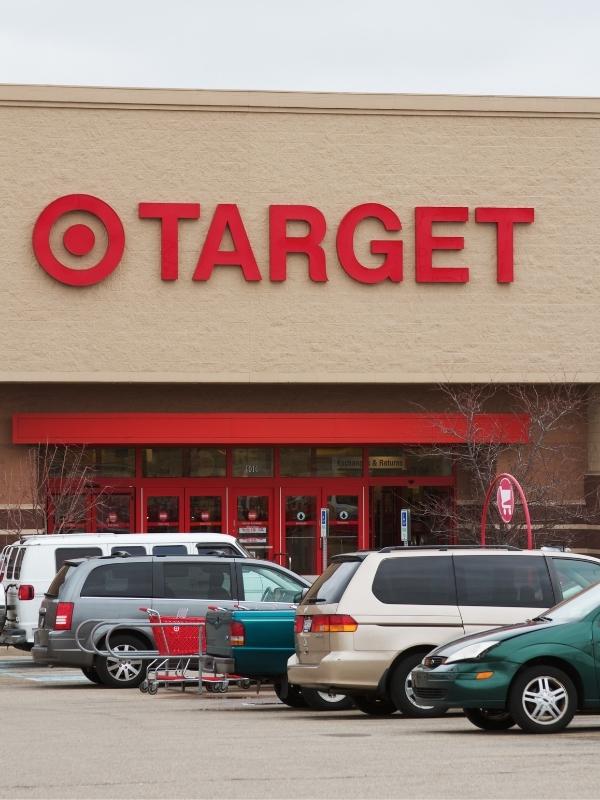In today’s world of ecommerce, it's common across all industries for brands to find resellers with whom they have no relationship listing their products. These online sellers go by many different labels: unauthorized sellers, rogue sellers, ghost sellers, diverters, gray-market sellers, etc. But whatever they’re called, brands are in agreement that they want their products removed from the sites.
The fact of the matter is that today’s retailers have practically unlimited access to inventory. In many cases, you can discover the source by following the flow of goods from factory to warehouse. However, that’s not always the case. If we remove the direct relationship, where the retailer purchases products from the brand and the brand ships to the retailer, what other scenarios are there? And is there anything that a brand can do about it even if they know?
Over the past twelve years, MAPP Trap’s product monitoring software, seller identification and MAP enforcement services have helped many brands identify how stores get their products. We’ve also helped them to develop and execute successful strategies for removing unauthorized sellers and plugging the source of diversion. But just like the Amazon disruption, the methods continuously evolve.
Below are the top 12 ways that merchants source your products and some recommended strategies that brands can take to stop them:

Retail Arbitrage
When items go on sale in a retail store or gets sold to a liquidator, online sellers purchase the products at deep discounts. Frequently the discount is below wholesale. This allows sellers to heavily discount and still make some profit. There are large and small retail arbitrageurs with sources of products ranging from swap meets and garage sales all the way to major retailers.
How do you know if a seller is engaging in retail arbitrage? Some indications can include a diverse selection of product categories, limited inventory levels of each product, and use of their own images.
What can you do about it?
Because of the First Sale Doctrine, there isn’t really that much a brand can do to prevent retail arbitrage, but here are a couple of ideas.
1. Add a buy-back provision to your terms and conditions that states you get the right of first refusal on any items that are going into the closeout bin. You may end up not opting to do it but at least you’ll know how many units are coming online.
2. If the seller is using your IP (copyrights or trademarks) insist that they remove the images or copy. The Digital Millennium Copyright Act is very useful for IP infringement.

Wholesale Distributors
For clarity, a wholesale distributor is a party who purchases large quantities of products directly from the brand. They purchase the inventory at a discounted wholesale price then resell to retailers that sell to consumers. Because brands rarely know which companies that distributors sell to, they have no visibility into the resellers that list their products. This is one of the most common sources of inventory carried by unknown sellers.
What can you do about it?
We recommend that brands add language to their distributor agreements that require the distributors to furnish account lists on a quarterly basis. Agreements should also define a distributor as an account that may sell to businesses only; not to consumers.
The list can be cross-referenced with the online sellers to determine the source of inventory. An alternative (or addition) to this is to require that the distributor allow you to approve/authorize any account that wants to purchase your products from them.

Large Retailers
It is not rare to see larger retailers (in other words, retailers that purchase large quantities of your products) acting as distributors. They purchase enough inventory to make full margin on their own retail sales but will offer to dropship or sell a small percentage of their inventory outright to other online sellers. This allows them to continue getting bulk discounts from you, which gives them the margins they need to discount.
What can you do about it?
We recommend that you add language to your terms and conditions that prohibits retailers from acting as distributors. Make sure to define retailers as companies that sell directly to consumers.
Returns
Nearly 20% of all online purchases are returned. When you consider the volume of purchases on Amazon, Walmart, Target, etc., that translates into a lot of products to handle. What do retailers do with the returned stock? Many of them actually outsource their returns to third parties. Those companies pay a fraction of the retail cost of the items then either sell them on their own sites, offer data feeds to sellers for reshipping, or sell entire palettes of returned merchandise to resellers.
What can you do about it?
In many instances, brands can request that returns be sent directly back to them, or to a fulfillment center of their choosing. Doing this helps prevent the reselling (as new) of unopened products that were purchased at closeout pricing. We recommend adding a section to the terms and conditions that provides for the handling of returns.

Lost Freight
Although not a huge contributor to unauthorized merchant inventory, shipments that get lost in transit often end up with inventory aggregators, because USPS, UPS, FedEx, and others aren’t set up to deal with this). Those companies sell mixed palettes of products to online sellers.
What can you do about it?
Given that most of these mixed palettes will only contain one or two items of any particular brand, most likely the products will most likely be sold quickly. However, in the event that they sit on a site for longer periods of time, then copyright infringement strategies can be used.
Bait and Switch
Sometimes companies will list your product, but when the consumer clicks on it, they are diverted to a competitor’s product. This can cause consumer confusion and they will blame the brand for letting it happen. Another example of the bait and switch is that the consumer purchases the product but never receives it. The store keeps the money knowing that the platform will reimburse the consumer then come after the seller. However, by then, the seller is already gone and the marketplace loses the money.
What can you do about it?
Review the listings from unknown sellers frequently, using too high/low price and/or bad images as a starting point. After you’ve identified a potential seller like this then make a strategic purchase to see what happens. Another option is to make sure they aren’t using your product codes (e.g., UPC, ISBN, SKU) to falsely lure shoppers. This is considered deceptive marketing as well as unfair competition, both of which are illegal practices.
Data Feeds
There are software companies that connect retailers with drop-shippers or wholesalers that get products directly from you. The technology allows retailers to subscribe to inventory sources. All the product data is automatically uploaded to the retailer’s online store and these orders get billed and fulfilled by the source.
For a list of some examples, you can go to:
https://www.doba.com
https://www.wholesalecentral.com
https://nat-procurement.com
https://worldwidebrands.com
What can you do about it?
If you are knowingly selling to drop-shippers and/or wholesale distributors, then add sections to your agreements that prohibit this type of activity. If you don’t want to prohibit it altogether, then make sure you get to approve any new accounts that want to purchase your products.
Amazon Regifters
This category falls into the data feed category but with a twist. There is software that enables a merchant to get data-feeds from other online sellers that stock their products. When the consumer purchases the item, the software charges the consumer, then purchases the item from Amazon (or Walmart or Target, etc.)
If it’s from Amazon then the product ships to the purchaser as a gift. Otherwise, it just gets shipped but from the other retailers. It’s a very high-volume, low-margin game but it happens more than you’d think.
What can you do about it?
This is possibly the most difficult scenario to stop. You can identify this type of seller by ordering and seeing where the shipment comes from. But what do you do about it? If the ultimate seller is unaware, then nothing can be done. However, if your drop shipper(s) or distributors engage in this then it can be addressed as prohibited behavior in your terms and conditions.

PPC/Affiliate Sites
Some websites list your products but don’t actually sell them. When the consumer clicks to buy they are either redirected to the actual seller’s online store, or the sale gets processed by the affiliate and then gets funneled to the seller. The affiliate site either makes a small transaction fee (for processing) or makes money from the click conversion (called PPC, or Pay Per Click).
What can you do about it?
This type of seller is difficult to identify, much less stop. The best strategies to use are based on IP infringement. You can demand the site remove your copyrighted material.
If they don’t comply, then you can report them to the domain registrar (e.g., godaddy.com) who will force them to remove the infringing IP. Even if they just remove the images, it’s still a win for the brand because most consumers won’t purchase products without seeing them.
Foreign Distributors
From time-to-time, MAPP Trap has discovered foreign distributors that received products at the port to ship overseas but kept a portion of the order in the country. Because of their steep discounts, the held back inventory was used for third-party drop-shipping or selling on their own stores.
What can you do about it?
Besides adding language to prohibit this action in their terms and conditions, brands should require they receive the bills of lading for all shipments (in and out). That way they can be sure the correct quantities and products got where they were supposed to go.
Counterfeiters
Although this mostly affects best-selling products of well-known brands, it does sometimes happen to smaller companies as well. True counterfeiters are not only difficult to catch, but tough to prove. Sometimes it can actually be a brand’s own factory that is doing it, which makes catching them even harder.
What can you do about it?
The first step is identifying the counterfeiter. Images and pricing anomalies (too high or too low) can be indicators. Once identified, the brand needs to make strategic purchases (or hire a service to do it) so they can compare the purchased products to the correct versions.
If you have the proof, then most marketplaces will force the sellers to remove the products and/or shut down their stores. This is definitely an area where you should seek legal counsel. MAPP Trap works with Freeborn, Peters who can be contacted at jrichardson@freeeborn.com.

The Brand’s Employees or Sales Reps
On several occasions, MAPP Trap has identified actual employees and/or independent sales reps that sell the brand’s products online. Relationships between the bookkeeping department and warehouse managers presented opportunities to falsely report short inbound shipments, then sell the under-reported inventory online. Sales reps have been known to sell their own samples or set up fake retailer accounts.
What can you do about it?
The hardest part of this scenario is identifying that it’s happening. MAPP Trap was able to match employee / sales rep surnames to business filings, domain registrations, marriage records and more. Once the identification is confirmed, then there is cause for dismissal.
All of these strategies to prevent or stop retailers from unauthorized access to inventory have been tested and proven successful by MAPP Trap and the brands we represent. Depending on the volume, brands can handle many of them in house. The trick is in identifying the sources, but once that’s done, the strategies are straightforward. Unfortunately, we are discovering new ways that unauthorized sellers source products every day. Let us know if we can help you to identify them.